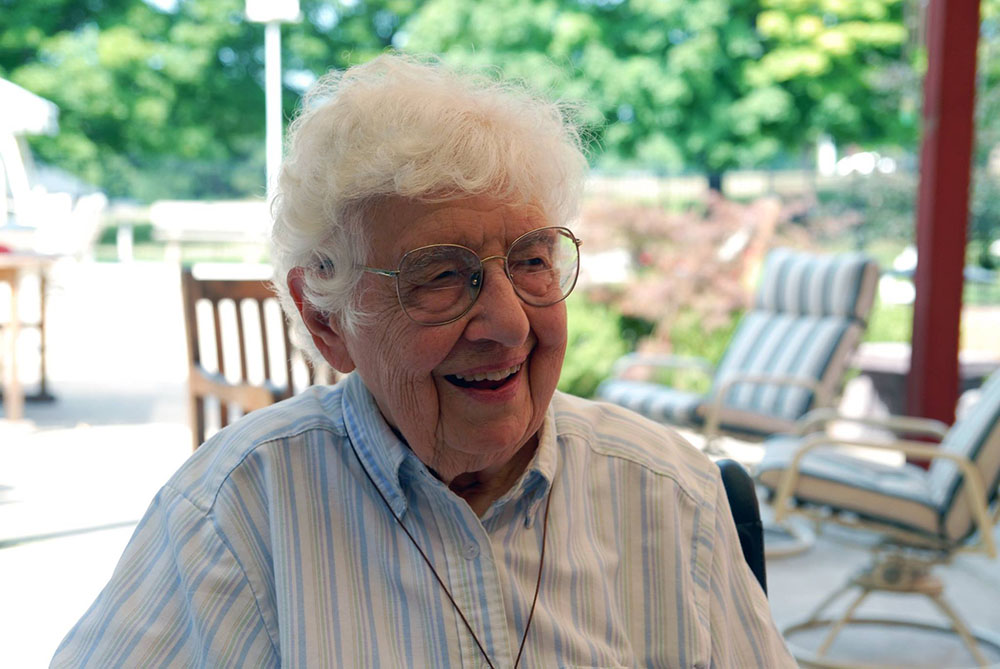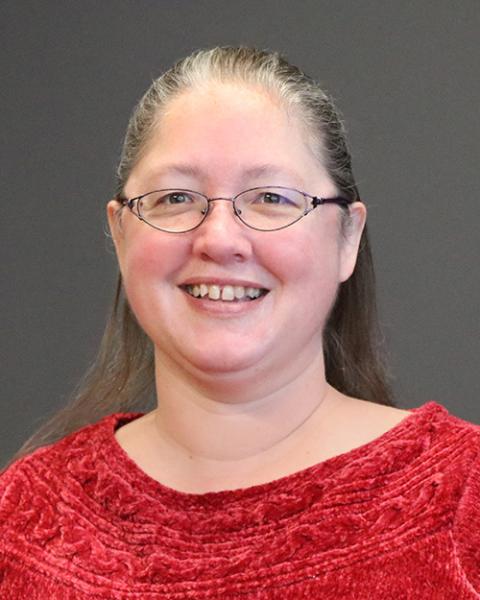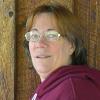
Clinton Franciscan Sr. Bertha Zeiser (Sisters of St. Francis, Clinton, Iowa)
Over the course of nearly six decades, I have known hundreds of sisters — from attending Catholic schools to volunteering with religious communities.
The best way I found to really become acquainted with sisters, though, is by recording their personal oral histories.
As an "inadvertent archivist" — without any formal training — I'd been tackling the reorganization of the Mission San Luis Rey archives in Oceanside, California, as a full-time volunteer from 2012 to 2013. I met members of the Sisters of St. Francis, Clinton, Iowa, who were ministering in San Diego, and was asked to lend my skills to their archives at the motherhouse.
I jumped at the chance, especially since I'd be living in community with the sisters and sharing their daily prayer and activities.
The Clinton Franciscans' archive room was located on the lower level of the three-story structure. Not exactly the basement, the room had no windows and had piping that leaked water into a floor drain. My "office" was in the basement of the congregation's administration building, with windows that looked out over a natural prairie.
Archiving, as those with the proper training will acknowledge, is about far more than just sorting through piles of books, documents and photos to determine what's important. The quote, "One person's junk is another's treasure," definitely applies.

Jennifer Head, archivist for the Sisters of Charity of the Blessed Virgin Mary, Dubuque, Iowa (Provided photo)
To learn more about how religious community archives were handled, I visited with Jennifer Head, the archivist for the Sisters of Charity of the Blessed Virgin Mary, Dubuque, Iowa, where drawers of cassette tapes preserved the sisters' oral histories. I also traveled to the Sinsinawa Dominicans, just across the Mississippi River in Wisconsin. Both congregations allocated substantial space to their archives.
That's when the idea struck me of recording the Clinton Franciscans' oral histories. They numbered approximately five dozen in 2013. Among them, Sr. Bertha Zeiser, already over 100 years old, remained mentally sharp and enjoyed telling stories of her younger days to those who visited her.
The Clinton Franciscan leadership team approved my idea, especially since it didn't involve much expense. I used a basic digital recorder and a standalone microphone, then transferred the files to the computer, editing them, if needed, to reduce background noise. They were stored in computer directories, and backed up on an external hard drive, for added security.
Video histories would have been a possibility, as we already had camera equipment, but the sisters preferred to chat without having to worry about how they were dressed, or if their hair was combed.
It also allowed me to easily transport the equipment down the road to The Alverno, the care facility where Sister Bertha lived.
Even after all this time, I can still recall how Sister Bertha described her place of birth. The town in rural Iowa really wasn't a town, she said with a laugh; it was the designation given to a railroad station, one that no longer existed. She went on, telling of her vocation, her time at Mount St. Clare Academy (later College) and convent — which the sisters ran from 1893 until 2005 — and highlighted more than 80 years of ministry as a teacher, principal and director of the community's temporary professed sisters.
As I sat, ensuring the microphone picked up her voice clearly, I was overwhelmed by her humility and joy.
After that, I compiled a brief list of questions, covering basic personal information, vocation journey, ministry and favorite highlights, sending them to the other sisters. This helped a lot as I scheduled recording sessions with the retired sisters living at the motherhouse. Sisters returning to Iowa for the summer's annual community days had ample time to reflect on what they wanted to say during the 10 or 20 minutes they met with me in the community room.
Advertisement
Listening to each sister — laughing with some, tearing up with others — I saw the mysterious hand of God at work in each unique life.
I'd been rummaging around the archives, shelves of handwritten journals and mementos left behind by those who founded the community near Gethsemani Abbey, Kentucky, in the 1860s. I had read about their struggles and perseverance in serving the poor and uneducated — while sometimes having little more than cornbread and syrup to eat themselves — but here, in their own voices, was a truth that went beyond documents and photos stored in filing cabinets.
Of course, there were those I didn't have an opportunity to record. Sr. Mary Smith, for instance, died shortly before my arrival in Clinton in 2013. She had previously served as congregation president and ministered in many locations, as well as speaking far and wide, sharing her spirituality with those seeking God on their own journeys. I had the privilege of sorting through her speeches, poetry and writings, but still wonder what stories she might have told, given the chance.
"The oral histories are a fabulous resource, because they are in her own words and what she experienced," Head, archivist for the Sisters of Charity of the Blessed Virgin Mary since 2012, explained. Part of their oral history project also involved transcribing many of the oral histories in written form, or creating summaries of the contents, she added.
That provides additional access for researchers, who may not have time to listen to an entire recording, Head noted.
She cited a story told in the oral history of Blessed Virgin Mary Sr. Mary Leoline (Mary Ann) Sommer, the only woman religious to walk the whole distance during the 1965 march from Selma to Montgomery, Alabama, even meeting John Lewis. "It's a fascinating piece to read," Head said.

Sinsinawa Dominican Sr. Lois Hoh, archivist (Provided photo)
Sinsinawa Dominican Sr. Lois Hoh, archivist for her community, oversees nearly 400 oral histories, created over the course of 15 years. The information recorded isn't relegated to history, though, she said. "Some of the oral histories were done with a specific focus," such as when the Dominicans transitioned from teaching to other ministries, such as in parishes. Another aspect of the information that plays into current trends is when sisters first began living outside the convent, and how they found community.
Hoh sees the oral histories as especially valued when a sister dies. "It's the sister's experience in her own words," she said.
It's important, however, to do the oral history properly, Hoh said. The interviewer, for instance, should stay out of the exchange. "It's not about shooting the breeze, not a conversation," she said. The sister being recorded should be permitted to pick up the nuggets from questions asked and run with them.
Oral histories will be, at some point, an integral part of telling the stories of religious communities that no longer exist, as the face of the church continues to change. I would joke with the sisters that the process was "quick and painless," requiring only a little of their time. None of the 50-plus recordings turned out perfect during those few months, with the flubs, chuckles and poignant pauses as reflective of the individual's personality as the words uttered.
The Clinton Franciscans haven't added any new vowed members to the community since I departed in 2014. Nine have died since then, including Sister Bertha in 2016. That their voices, their stories, will live on — albeit in a computer directory of audio files — gives me a sense of contentment that I was able to help preserve that history, despite merely being an "inadvertent archivist."
[Julie Ferraro is a freelance writer from Yelm, Washington.]







